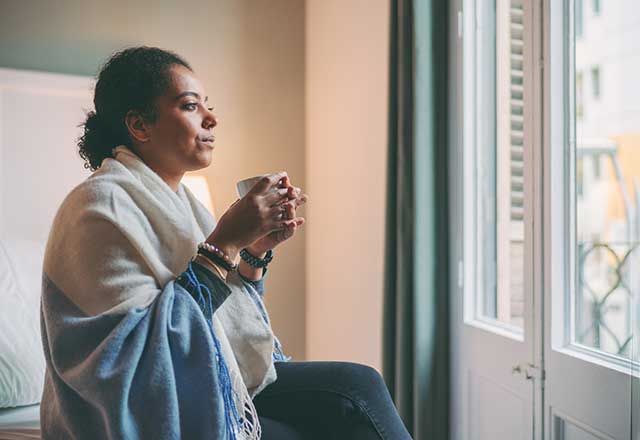What is SAD?
Everyone remembers the first day they step outside after the heat and stickiness of the summer and feel the cold bite of the winter. While this is exciting for some people, winter can bring a whole host of emotions for others.
Seasonal affective disorder (SAD) is a type of depression that is triggered by changes in the weather. The most common form of SAD arises from depressive symptoms in the winter and fall, but a smaller subset of people experiences symptoms of SAD in the spring and summer months. Although the exact mechanisms are complicated, scientists believe SAD in the fall and winter months may be caused by the shortening of the days and lack of sunlight that can affect people’s circadian rhythms.
What are common symptoms of SAD?
- Loss of energy
- Trouble sleeping
- Difficulty concentrating
- Feeling low mood throughout long periods of the day
- Changes in weight or appetite
- Little interest in things you usually enjoy
- Thoughts of self-harm or suicide
What should I do if I believe I may be experiencing SAD?
If you believe you may be experiencing symptoms of SAD, it is important you see a health care provider who can give you further diagnosis and treatment. Below are some common suggestions for combating SAD that should only be supplementary to treatment from a licensed provider.
Medical Treatments:
These are commonly used medical interventions for SAD. Please speak to your physician to find out if one of these treatments may be right for you.
- Light therapy/photo therapy: Light therapy involves using a light box that exposes you to bright light. This is used as a replacement for natural light, and has been shown to improve mood and other SAD-related symptoms. Your physician can recommend whether a light box is right for you, as well as how and when to use it.
- Medications: Some people suffering with SAD may be prescribed medications such as antidepressants to help combat their symptoms. Medications are prescribed by health care providers. It may take some time to find a medication and dosage that works for you.
- Psychotherapy: Talk therapy can help people affected by SAD to talk about their thoughts, feelings and behaviors with a licensed professional. There are many different kinds of psychotherapy that may be used to treat SAD.
Lifestyle Changes and Nonmedical Interventions:
- Keep up with regular physical activity and exercise.
- Open windows, blinds and doors in your home to allow more natural light in.
- Look for ways to get outside and enjoy nature.
- Engage in social activities with friends and family.
- Use a journal to cope with some of your thoughts and feelings.
The changing of seasons can have significant effects on mood and mental wellness. It is important to speak to a health care provider to learn more about SAD, obtain a potential diagnosis and explore possible treatments.
Information in this post was derived from the following sources:
https://www.everydayhealth.com/depression/treatment/ways-to-ease-seasonal-depression/
[themify_hr]
Related Content
- A Gold Medal for Wellness
- The Mental Health Crisis in Medical Education: Sharing Stories, Normalizing Unwellness and Seeking Help
- Human flourishing: Could a philosophical concept impact health?
- What Does Dopamine Really Do?
Want to read more from the Johns Hopkins School of Medicine? Subscribe to the Biomedical Odyssey blog and receive new posts directly in your inbox.

Great read!! I never really heard of SAD, or seasonal affective disorder before until recently. I definitely experience this and never knew it had a name, and I did some more reading and want to hear your opinion on this, https://www.ez.insure/landing/2021/11/feeling-sad-it-could-be-seasonal-affective-disorder/ . It is similar but with some extra info that I would love to know your thoughts on
Comments are closed.